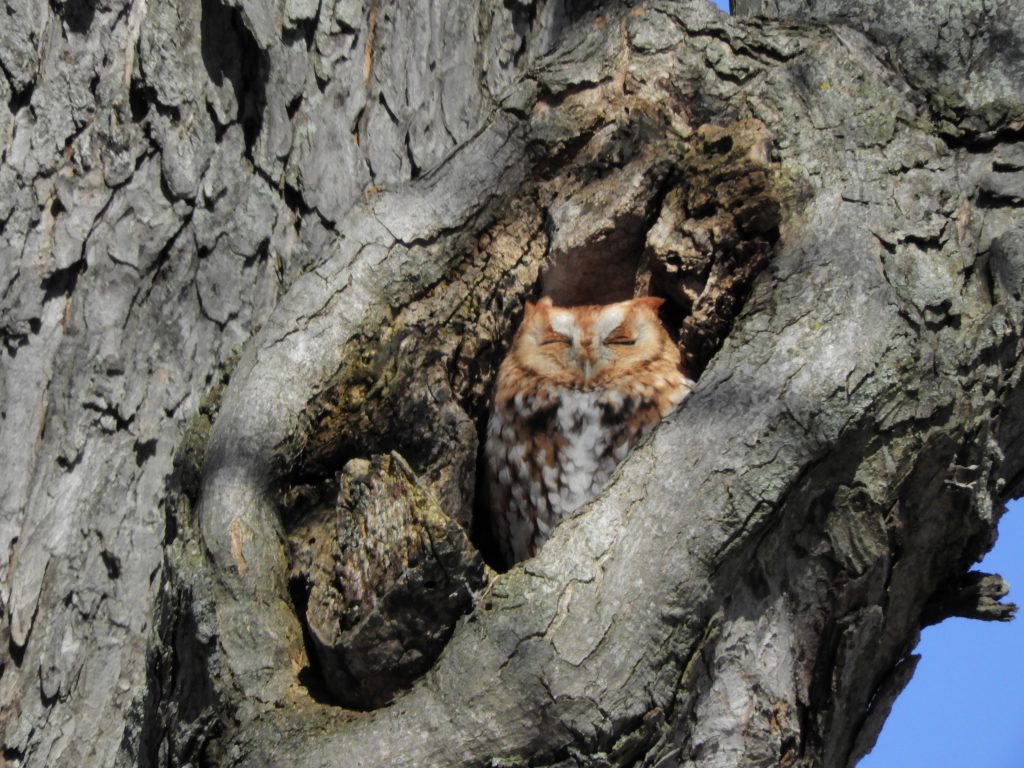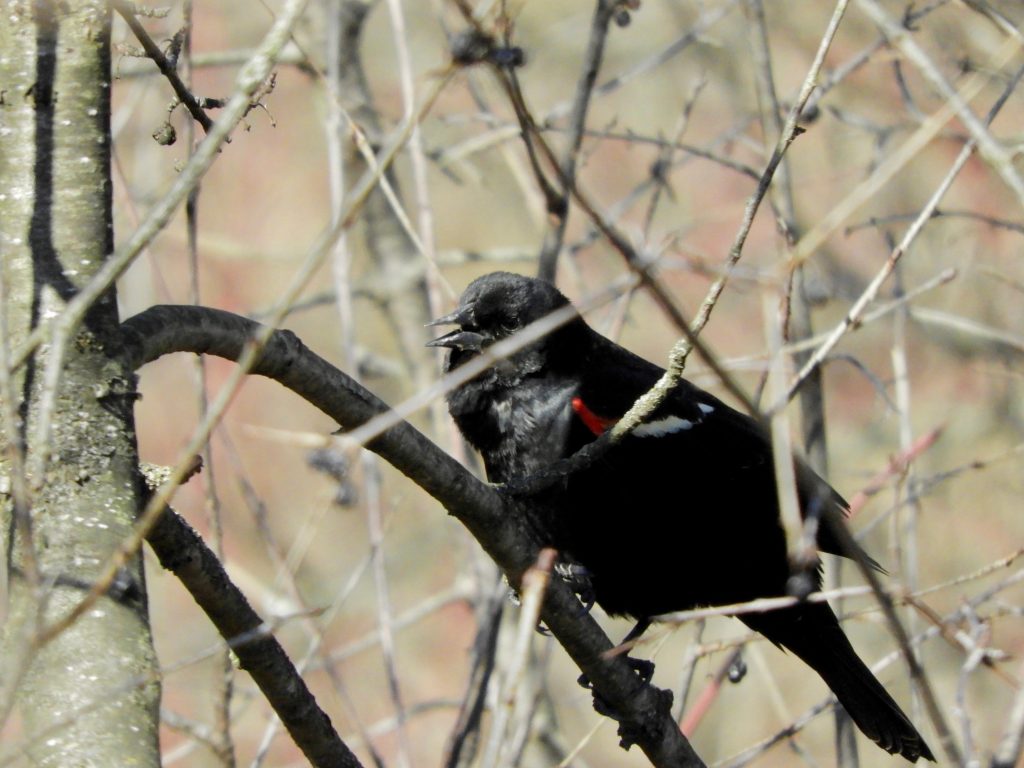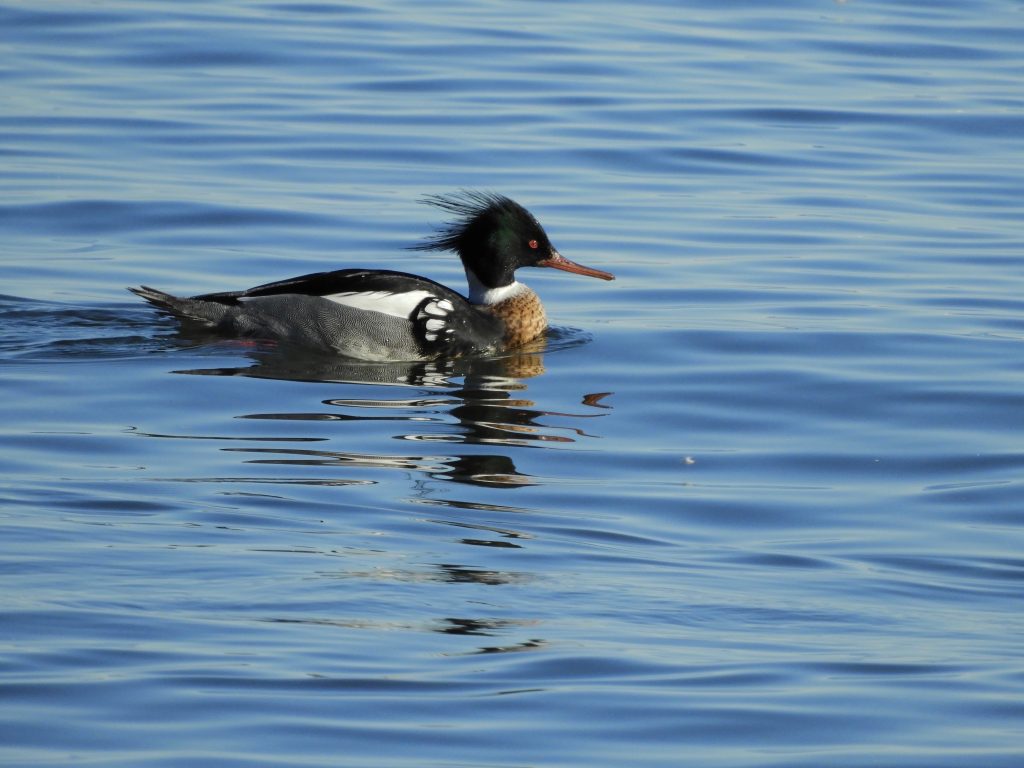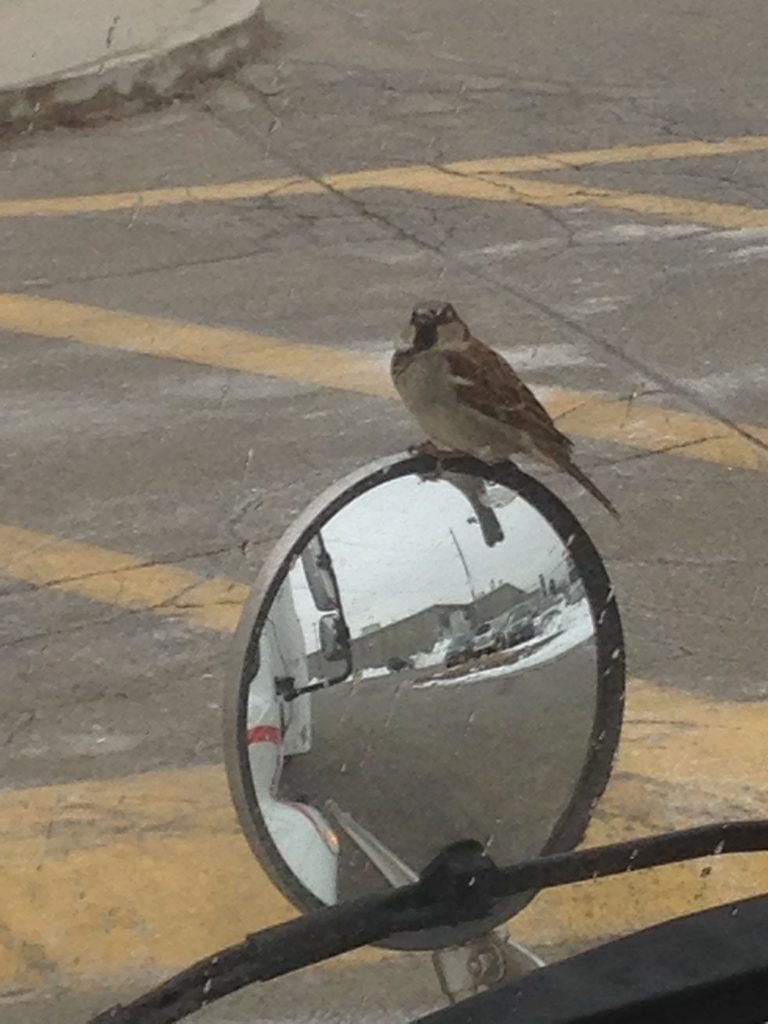RBG. Hendrie Valley, Burlington ON. March 7 2020. A lesson I never seem to learn is that you can’t make a season out of a single day; spring out of a mild winter day that is. One swallow does not make a summer. Encouraged by bright sunshine, a blue sky and hopeful reports of spring migrants I tried to, but at the end of an afternoon I felt empty-handed. The trails I walked just looked down-trodden: mud where it shouldn’t be and ice-hardened snow where the sun couldn’t reach.
I visited a known spot where an Eastern Screech Owl will often sunbathe on bright days like this. And it was there, on the doorstep of its tree cavity, and it had attracted a predictable crowd of admirers. A beautiful bird, yes but I felt no particular satisfaction at seeing it this way.


Following a familiar trail, I hoped for something out of the ordinary and I should have felt encouraged by the several, early arrival, male Red-winged Blackbirds scavenging at ground level. They are the advance guard for the flood of territorially-minded kin soon to follow, but they didn’t seem very encouraged by anything and could barely mutter an ‘I’m okay” churr; it’s still winter. There were Northern Cardinals, Dark-eyed Juncos and Black-capped Chickadees just as there should be, but no more signs of spring.
Back at the lake I was irked to see that the city has cordoned off one of the best places to park and watch waterfowl, keeping us out with bright orange fences while they create some sort of offshore, floating, wave barrier. But there was a Bird of the Day to be seen here, a male Red-breasted Merganser; rather splendid in his ready-for-spring dress. I might have enjoyed him more had a trio of wings-spread Trumpeter Swans not moved towards me, probably just hoping for food, but menacing enough that I decided to back away.










